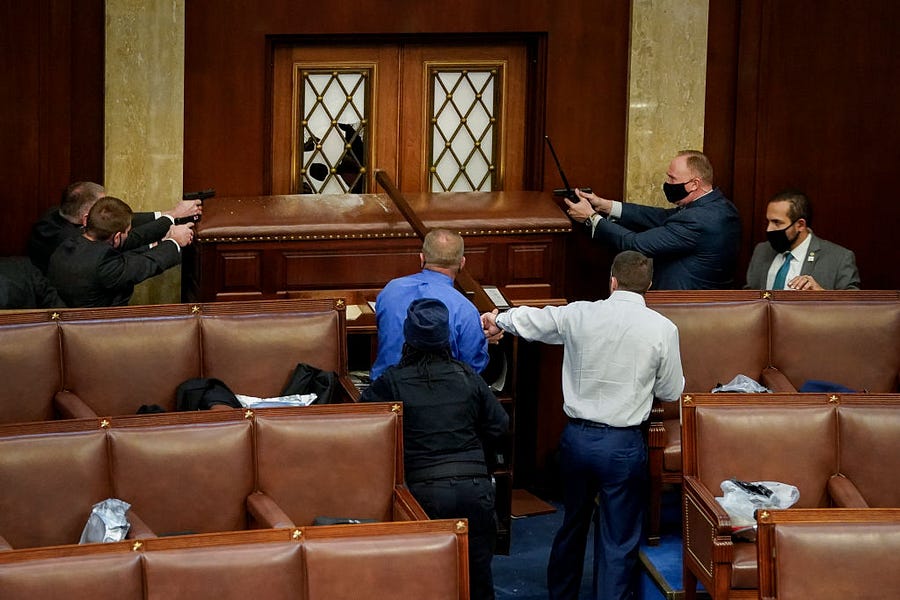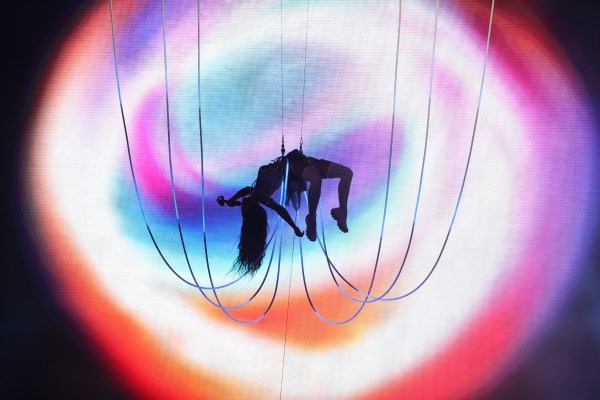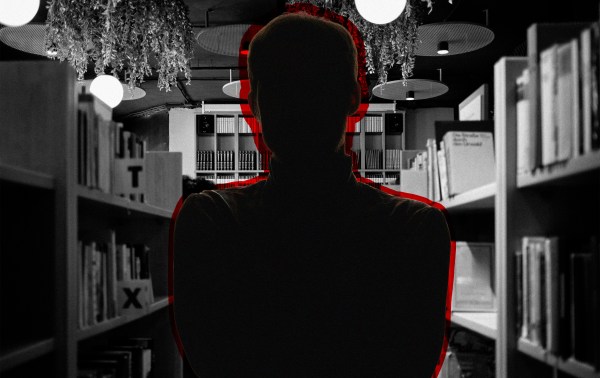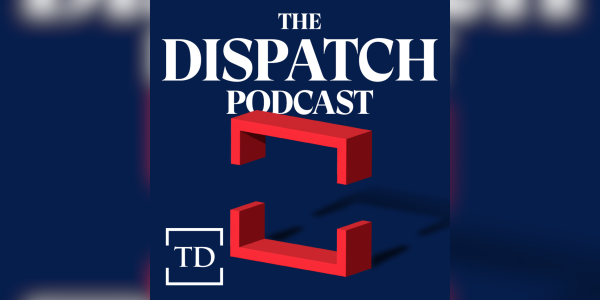For those of us who were at the Capitol January 6—it’s never really ended.
When I go to work, I walk the same halls that in the aftermath were littered with shattered glass and debris. The detritus is gone now. But the memories aren’t.
When I listen to lawmakers’ speechifying and go to watch votes in the House of Representatives, I sit in the wooden rows of seats in the upper balcony of press galleries, the same ones that I crouched behind that day when security yelled at us to get down, now.
Where below in the chamber, I could see just how close we came to the mob.
When I had gotten to the Capitol that morning, there were plenty of signs that a pro-Trump coalition, and many from out of town, was out in full force. More pick-up trucks than are usually seen on the streets of Washington, D.C. Some flying Trump flags. Tourists walking around in crowds, unmasked. When I parked and got to the Hart Senate office building, which back then was my go-to entrance, an older woman, clearly a protester, was trying to enter the building. Security asked for her ID and when it was clear she was not authorized to enter—the Capitol was still closed to visitors—she turned back and stalked off, muttering something. I remember thinking how weird it was that she would just try to waltz into the Capitol complex. I didn’t realize then that was the plan for some.
Minutes later, I was in my seat in the House press gallery. The situation started to go south quickly. Briefly, there was an evacuation order for the Cannon House office building over a suspicious package. But before things could return to normal, an aide passed through the gallery and told me that I should be prepared to be in an hours-long lockdown. I remember running to grab my laptop and charger.
I’d barely made it back to my seat before Capitol Police officers started reinforcing the glass doors lining the chamber with heavy wooden doors.
Capitol Hill security forces began briefing the 100 or so lawmakers who were on the floor and the 20 or 30 or so members in the upstairs gallery where the visitors usually sit. The message was serious: Protesters were in the Capitol; they had breached security and were in the rotunda just down the hall.
Lawmakers needed to crouch down behind their seats and be ready to evacuate, security added. A buzz of angry and confused questions broke out, and Rep. Steve Cohen, a Tennessee Democrat, yelled that someone should call then-President Donald Trump and ask him to tell the mob to stand down.
Trump had spoken to the crowd minutes before at a rally on the mall. “We’re going to walk down to the Capitol, and we’re going to cheer on our brave senators and congressmen and women,” he told the protesters. “You’ll never take back our country with weakness. You have to show strength, and you have to be strong.” But he didn’t walk down to the Capitol with the rioters. He returned to the White House, where he would watch what unfolded in safety.
Back in the gallery, we were told to put on escape hoods handed out by press aides: Tear gas in the rotunda was strong in the air. I tore at the heavy gray packaging of mine but did not put it on. In that moment of chaos, it was too much to figure out.
Rep. Ruben Gallego, an Arizona Democrat and a Marine veteran who served in Iraq, instructed other members how to operate their gas hoods.
Then the pounding began.
It took me a moment—I think it also took the remaining lawmakers a moment—to realize what it was. Rioters were banging against the doors, trying to get in.
As the noise grew, events grew more confused and more surreal. But I remember brief snatches: The House chaplain began saying a prayer aloud.
At some point, the rioters shattered some glass in the doors. Security rushed to block them with furniture—benches and anything else heavy—while they began hastily evacuating members of Congress out of a side entrance. It took longer for them to get to the gallery above.
Eventually, we were told to evacuate. My hands full with the escape hood, laptop, a spiral bound reporter’s notebook, I started to follow the others. Almost as soon as I began to move, the urgent call to “get down!” came. We crouched.
Moments later, the report of gunfire sounded. I wondered if I was in an active shooter situation. Even if there was a gunman, I thought, even if my exposed face would put me at risk, I needed to lift my head to see what was happening. I remember inching forward and peering around the seats. I wanted to get an eyewitness account for World magazine, where I worked at the time. And I wondered whether there would be more gunfire.
I had a direct line of vision to a small group of security officers and lawmakers who had barricaded a door and were now standing with the slim divider of doors from the mob. Above the barricade, protesters had smashed holes in the glass of the doors. Rep. Markwayne Mullin, a Republican from Oklahoma, began pleading, berating, almost coaxing the protesters: “This is un-American!” he said. “This is not the way to do it.”
Finally came the instructions that we needed to move.
I was one of the last of the journalists evacuated. A couple others, moving with much more speed, went around me. I spurred into movement only when an exasperated aide told me, “We can’t leave if you all don’t leave.” The slight guilt trip stirred my frozen legs.
Following the crowd, I ducked under the gold railings that divide the media from the visitors’ pen. I was too short to hop over them in my pencil skirt. On the way down the hall, I shoved my reporter’s notebook into my right riding boot. “Thank God I didn’t wear heels,” I remember thinking. It was just shy of 3 p.m.
We went to an undisclosed room in one of the office buildings.
Once I got to the room, a staffer tried to block me from coming in. “Are you press?” she asked. Somehow, our evacuation group had gotten split into two. I told her I’d just followed instructions. “If you tweet anything about where we are, I’m taking your phone,” she told me.
I moved silently to my seat, just relieved I wasn’t kicked out. I didn’t know where I would have gone.
Then came the waiting. COVID-19 social distancing protocols went out the window when rioters broke past security and stormed the building. In lockdown, we all sat shoulder to shoulder. And in the middle of the room, a number of Republican lawmakers weren’t wearing masks. I tested positive for coronavirus a few days later.
One aide was crying quietly.
Another began calling family members and friends and telling them, “I’m safe, I’m safe.”
That spurred me to call my parents as well. I talked to my dad and told him what had happened, I explained that we were in lockdown and that I didn’t know what would happen—but we seemed safe for now.
For the hours we waited in that room, it seemed like we mostly followed the news as things became clearer in horrifying snippets. We learned the gunfire we heard was a police officer shooting and killing a woman who we now know was Ashli Babbitt in the House speaker’s lobby. Later I saw the video of the shooting and other disturbing scenes on Twitter. We heard reports of Capitol Police officers who were injured.
I watched the video of then-President Donald Trump telling the rioters to go home, adding, “We love you, you’re very special.” One of the more jarring videos I saw: streams of rioters walking right past Capitol Police officers as they exited the building. Security made no attempt to arrest them. As the rioters walked out, they passed graffiti scrawled in Sharpie on one of the doors: “Murder the Media.”
Capitol Police wouldn’t have the situation under control for hours, while they inexplicably waited for National Guard reinforcements. It wasn’t until around 8 p.m. that Congress gaveled back into session and, with the shock of what had just happened, voted to certify the election results.
Vice President Mike Pence addressed rioters directly: “To those who wreaked havoc in our Capitol today, you did not win,” he said. “Violence never wins. Freedom wins. And this is still the people’s House.”
But all the day’s events were not enough to turn some Republicans from their objections, as 147 congressional Republicans voted to object to the results in a smattering of states.
When I walked out of the Capitol that night, it was dark and deserted except for crews of National Guardsmen standing around. I remember wondering why they hadn’t come sooner.
But I also wondered what it said about our country that they needed to come at all.
The consequences were worse for many others.
Babbitt was fatally shot by a police officer while trying to get into the House chamber. Three people died of medical emergencies during the course of the attack.
Capitol Police officer Brian Sicknick, 42, died of what the medical examiner said were natural causes. Four police officers who responded to the attack on the Capitol died by suicide in the months afterward.
More than 150 police officers, from Capitol Police and Washington’s Metropolitan Police Department, sustained injuries: concussions, lacerations, rib fractures, burns, injuries to eyes, heart attacks. And law enforcement has also had to reckon with the invisible injuries—the post traumatic stress that has followed them since. Some of the insurrectionists were armed. Rioters attacked police with flag poles, bear spray, metal pipes, baseball bats, stun guns. Some carried zip ties, Molotov cocktails, explosive devices, crossbows, and long guns.
So far, federal courts have charged more than 700 people in the insurrection. That number is likely to grow as the FBI continues its work.
Even though President Joe Biden was sworn in—it seems like, in the wake of January 6, the edges of our democracy are frayed in a way that makes me wonder if things will continue to hold.
One aspect that sticks with me was how quickly convenient falsehoods cropped up and spread.
Even as I was huddling in the room with members of Congress, waiting out the siege, someone I knew was asking me if the rioters were aligned with Antifa. When I responded that it didn’t seem likely, that person sent me back a claim that was already circulating on the internet seeking to connect rioters with left-wing organizers.
Recently I was talking to a different acquaintance who told me she had gotten on a plane that afternoon to fly back to Washington, D.C. By the time she landed, the storming of the Capitol was underway. Her phone notifications were chaotic, and already narratives were seeking to explain the ugly facts away.
“Then I saw your tweets and it was so grounding,” she told me. “Because I knew someone who was experiencing it and I could trust that.”
This is someone who works in conservative politics. She remembers the denials that started that day. That it was anti-fascists, false flag operators, perhaps even the FBI. That the election didn’t pass the smell test. That the Supreme Court should do something. That Pence should do something. That it was anybody other than who it was: A mob of disgruntled Trump supporters conducting a concerted, violent attack to delay the certification of the results of the 2020 presidential election and deny Joe Biden the presidency.
She expressed disgust about that response.
Her response struck me as rare. In many of the conversations I’ve had about that day, acquaintances and lawmakers have downplayed the seriousness of January 6. They’ve pushed back as I’ve shared my own experience. They’ve insisted that most of the people there that day were “peaceful.”
There was a moment in the aftermath when it seemed like the GOP would split from Trump. That moment didn’t last long. Donald Trump is still seen as the head of the party, and he may run for president again in 2024. And the consensus seems to be, among seasoned politicos and amateurs alike, that when he runs again, he’ll be the frontrunner.
When I got back to my apartment that night, I didn’t attempt to sleep right away. My mind simply wouldn’t quiet. Instead, I sat on the couch in my living room. I don’t remember what I did. Whether I scrolled Twitter, or just sat waiting for my roommate—she worked late—to get home.
Only one moment stands out clearly: a loud bang sounded from outside. Most likely someone in the apartment complex slamming a door, or dropping something. In an instant I sprung up and crossed the room to our balcony doors. I flipped the blinds closed. Outside, all was dark and still.
*Correction, January 7: This piece originally referred to Rep. Ruben Gallego as a freshman lawmaker. He has been in Congress since 2014.






Please note that we at The Dispatch hold ourselves, our work, and our commenters to a higher standard than other places on the internet. We welcome comments that foster genuine debate or discussion—including comments critical of us or our work—but responses that include ad hominem attacks on fellow Dispatch members or are intended to stoke fear and anger may be moderated.
With your membership, you only have the ability to comment on The Morning Dispatch articles. Consider upgrading to join the conversation everywhere.